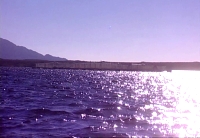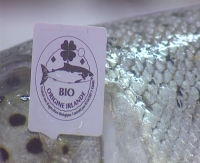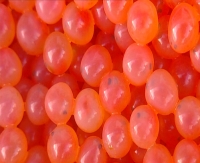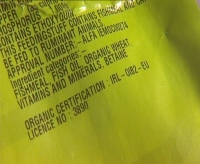
Home
Organic Process
Location
Contact
Photo Gallery
Links
|
The Organic Process Being organic, sets Mannin Bay Salmon apart from other mass produced salmon, and achieveing the organic status means that we have to meet various stringent criteria set down by different accreditation bodies. At present our salmon is accredited by Naturland (Germany), Bio Suisse (Switzerland), and Qualite France). Have accreditation from an organic body means that the fish is farmed taking account of its welfare, welfare of the environment and traceability of the feed that helps the fish to grow. Our salmon is farmed in accordance with EU Regulation 2018/848 and Regulation 2021/279 governing Organic Production. Just some of the criteria we have to meet include: The lifecycle of our salmon mirrors exactly what happens their counterparts in the wild. They start life in freshwater as an egg which gets hatched out, which after about a year is grown out to a fish about the size of your finger, which is called a smolt. At that stage they are transferred to the seawater and from there they are fed a nutritious diet which helps grows them to the adult fish which we see on the counter shelf. Feed /Diet The organic salmon feed produced in Ireland is driven primarily by conservation measures. That means a lot of vegetable material (30%) is included in the diet, so the feed producers stay away from wild-fishery-caught, marine proteins and oils. They do have to use some marine proteins and oils and this comes as a bi-product from managed herring & mackerel fisheries, where they use the trimmings. The pigment in the feed, gives the salmon their rich colour comes from a yeast based pigment called phaffia. It is a natural source of astaxanthin. The feed producers too are certified by the accreditation bodies and are audited once per year. Mannin Bay Salom are grown in very large cages, approx 1/3 the size of a modern football stadium. We try to mimic the natural conditions of wild salmon. The fish only take up 0.5% of volume of the cage, i.e. 95.5% of the cage's volume is the Atlantic Ocean! Once the fish have reached maturity they are carefully selected and taken ashore where they are transferred to bins of iced water. These bins of iced water are transferred by truck to the packing station. At the packing station the fish are graded by size and by quality standard and packed in polystryrene boxes which are dispatched to whatever market place in the world where they are required. For organic salmon that require processing, the salmon are sent to the filleting area where they are hand-trimmed and based on customer specification, the salmon will be broken into steaks, portions, fillets and then packed and shipped to the consumer. Our salmon can be harvested, processed and delivered to the customer worldwide within 24 hours. |
 Cage sited so as have minimal visual impact.  Each fish is individually tagged for traceability.  Fertilised in freshwater eggs before hatching  Feed with organic certified label  Organic salmon ready for packing |